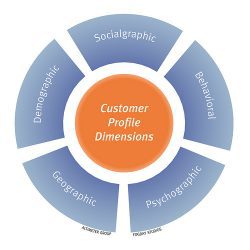“Customer is King”, is a forgone conclusion. The very existence of a Business is based on its customers. Selling is the toughest job because of various reasons. Buyers have their own mind. Buying decision is not always based on logic so 2 + 2 is not always 4. There are many factors that affect buying decision such as perceived need, value that the product or service will deliver, budget, timing and most importantly personalities and opinions of the stakeholders. Any interaction/ transaction where there is another ‘thinking individual’ involved, is always difficult. Therefore understanding the buyers is very important.
What is a buyer persona?
Sale of any product or service in B2B segment can be challenging. Ultimately the buying decisions are made by individuals, therefore, the buyer personas need to be looked at carefully.
“Buyer personas are fictional, generalized representations of typical customers.”
Persona creation helps us in defining marketing and sales strategy. Once the persona is defined you know who your customers are, where you can find them (online/ offline), what are their goas and challenges, what drives them, what appeals to them and finally how they make their buying decisions.
Why is understanding buyer persona important for sales?
In micro and small businesses the purchase decision making power is concentrated with the Owner. We worked on some typical personas to understand owners running small to medium size business. A buyer persona can be created using following parameters. I am sharing our findings after studying close to 50 business owners in various industries. The product for which the buyer persona is created is a B2B portal for managing Front-office tasks of sales and support.
This is the first write-up in the series of II. In Part I, we will create the buyer persona. In Part II, we will analyse it and create a marketing strategy.
Creating buyer persona of owner of a small business unit
- Industry: The product is industry agnostic because every company needs a front-office solution. The sector we focus on is service based B2B and occasionally B2C organizations. These companies procure required raw material, assemble or use it at the site and provide maintenance service round the year. Typically the sales and service engineers are moving in the market. E.g. pest control, solar panel manufacturer and installers, water purifier manufactures and installers, invertors, air conditioners, cooler providers.
- Organization Size: Small organizations with 10 – 100 employees
- Location: Metro, Tier1, Tier2 cities in India
- Annual Turnover: 1 CR – 5 crores
- Background of the buyer: Typically owner/ founder of the company. Many a times it is a family run business. In some cases the buyer can be a trusted Operations Manager i.e. employed top boss or second-in-command to the owner who advises the owner.
- Demographics: First generation – age 40-65. Second generation – age 25-35.
- Identifiers: Functional/ subject matter expert in business, not so tech savvy but willing to change, believes in personal touch with the customers, has few loyal customers acquired over the years.
Typically the owner is supported by a second generation member in relation – highly educated, tech savvy, raring to grow and diversify the business, believes in digitization and innovation.
Goals of the business:
- Continuity of business
- Grow business into multiple locations
- Automation and digitization
- Optimize team size
- Reduce person dependency
- Single platform app with mobile option. Do not want different applications for different departments or functions.
Challenges:
- Most of the time owner and entity are not differentiated
- Mainly operating in niche area
- Owner is not decided if he wants to be a big player in a small market or a small player in the bigger market
- Maintain business knowledge
- Unorganized way of handling of inquiries and sales
- Issue in trusting in employees so ends up working himself or very few trusted employees
- Due to small team size people have to multi-task
- Busy in day-to-today problem solving and not focused enough on long term strategy. Urgent v/s important issues
- In some cases there is no succession planning so future vision is not clear
After creating the persona, understanding the challenges our next task was to identify what would they be looking for, what would be their concerns while evaluating software solutions, where and how we could meet them, how we could approach them. The entire sales & marketing strategy formulation for the SME segment took us 4-6 months. No amount of reading and online research prepared us for the insights we got until we actually launched into this market.
Some interesting observations and our learnings from this market to follow!




